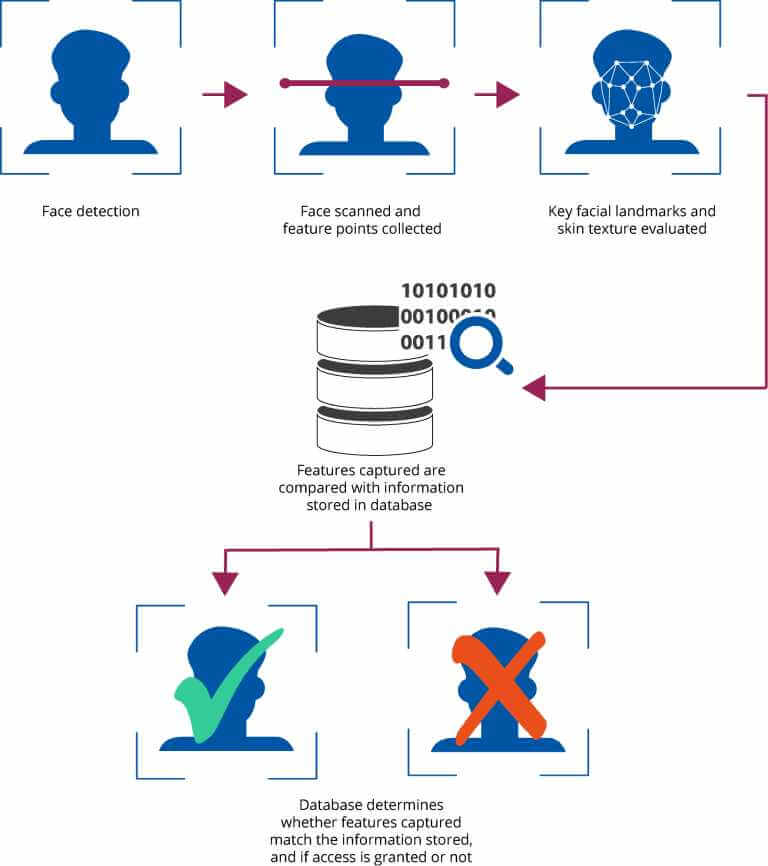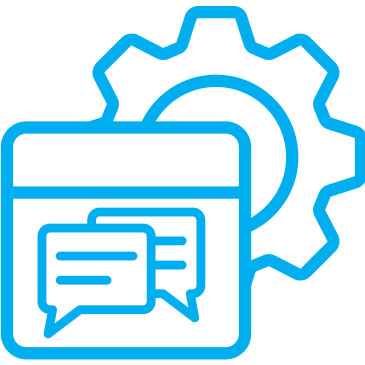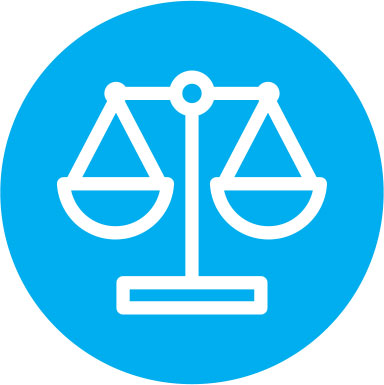The benefits of facial identification
Facial identification is growing in popularity for commercial use, due to recent advances in reliability, accuracy, and performance. Additionally, facial recognition technology does not require any physical contact or interaction with the person being identified, making it one of the least intrusive forms of biometric identification.
Facial Identification
While individuals may share some similar facial features, facial recognition technology is able to make use of around 80 individual facial features and bring them together to create a faceprint that can identify an individual accurately. These features are known as nodal points, and include the depth of the eye sockets, the shape of the cheekbones, length of the jawline and distance between the eyes. Individual distinguishing features, such as moles, can also be added to the system to increase security.
The four key steps in the facial recognition process are:
Finding the Face
Systems process numbers, so the first step is to teach the system to find the face in an image. Dark pigmentation, poor lighting, low resolution, facial paraphernalia, and camera angles can all “hide” a face mathematically. This is where sophisticated algorithms and face tracking technology is used to isolate the face, no matter the camera angle or lighting.
Normalising the Face
Before any matching can take place, faces must be distilled into common “dataset” as defined in international (NIST) standards. To a human observer, this dataset looks like a well-illuminated image of a forward-looking face, both eyes open, and undistorted by facial expressions or hidden by facial paraphernalia. Since not all face images are quite this perfect, the software must normalise the image.
Extracting Information
An algorithm is then used for “Feature extraction”. The objective is to find and isolate the most useful numerical information in each face, that best accounts for the variation between faces. This information can then be translated into a set of relationships that can be accurately compared with other face datasets.
Matching the Face
The “recognition” part involves comparing the extracted data of an unknown face with the extracted data of known faces. The face datasets are compared, differences in data are identified, and, when the data is similar, a probability (score) is assigned.

Business applications
Facial recognition systems are best suited to secure, controlled environments where the subjects are known to the system and new users can be on-boarded via a formal procedure.
Industry solutions
The increasing sophistication of facial recognition systems makes them ideal for high value, high-security environments.
Benefits summary
Unobtrusive
Users can be identified from a distance without making contact with any surface. Due to the popularity of this method in many smartphones, most users are already familiar with the technology.
Flexible implementation
This method requires good lighting, so this needs to be taken into account when selecting the best methodology for a given application.
Future proof
The algorithms used to match facial features have improved dramatically in recent years. Software updates which improve the performance of the system can be deployed as they become available.
Let’s start a conversation
Deciding which biometric modality to use can be confusing. But remember, the technology is only a small part of a successful solution. We focus on your business challenges first, to determine what solution will work best for your environment. In fact, that’s why Argus exists. We’d love to help you put identity at the centre of your organisation, so let’s connect!





